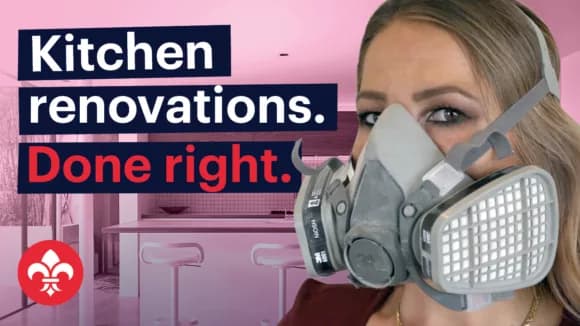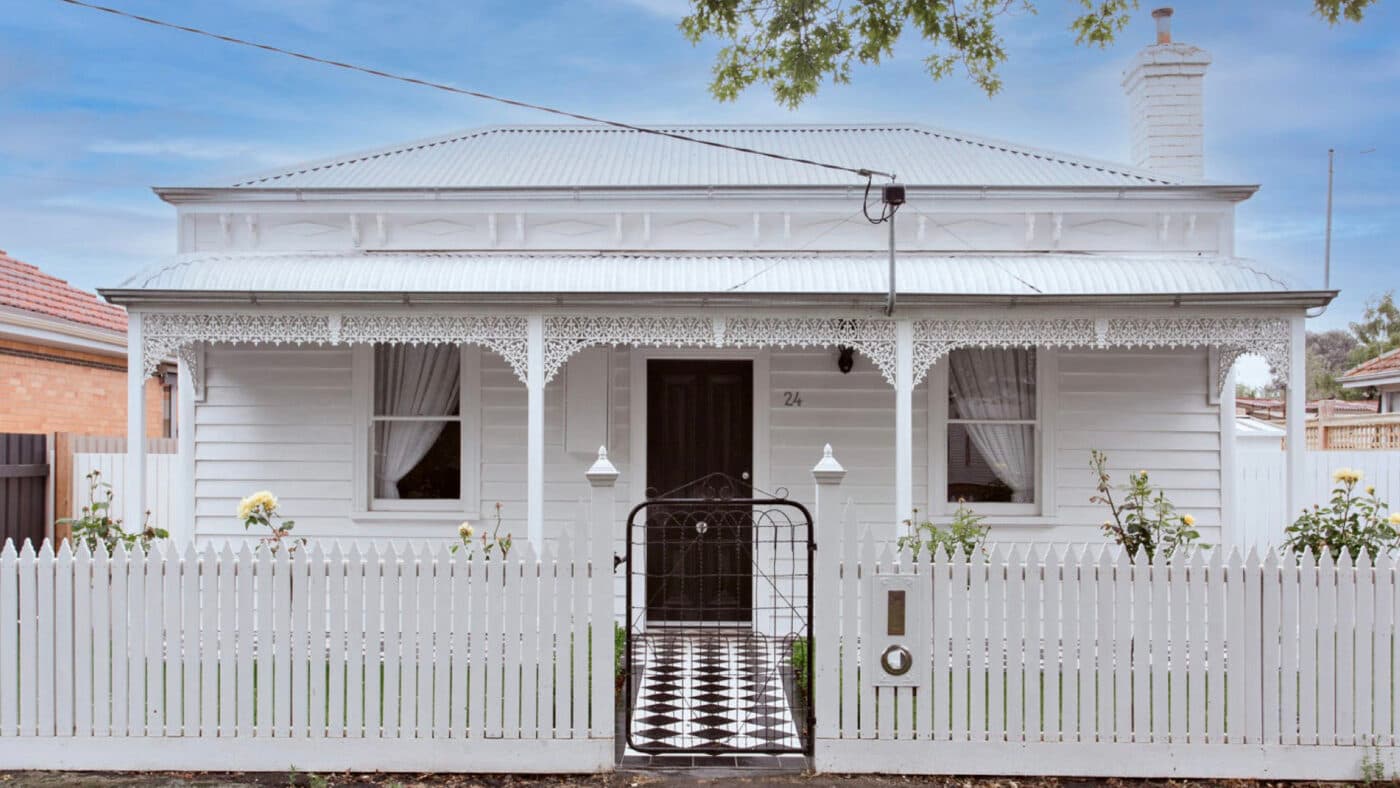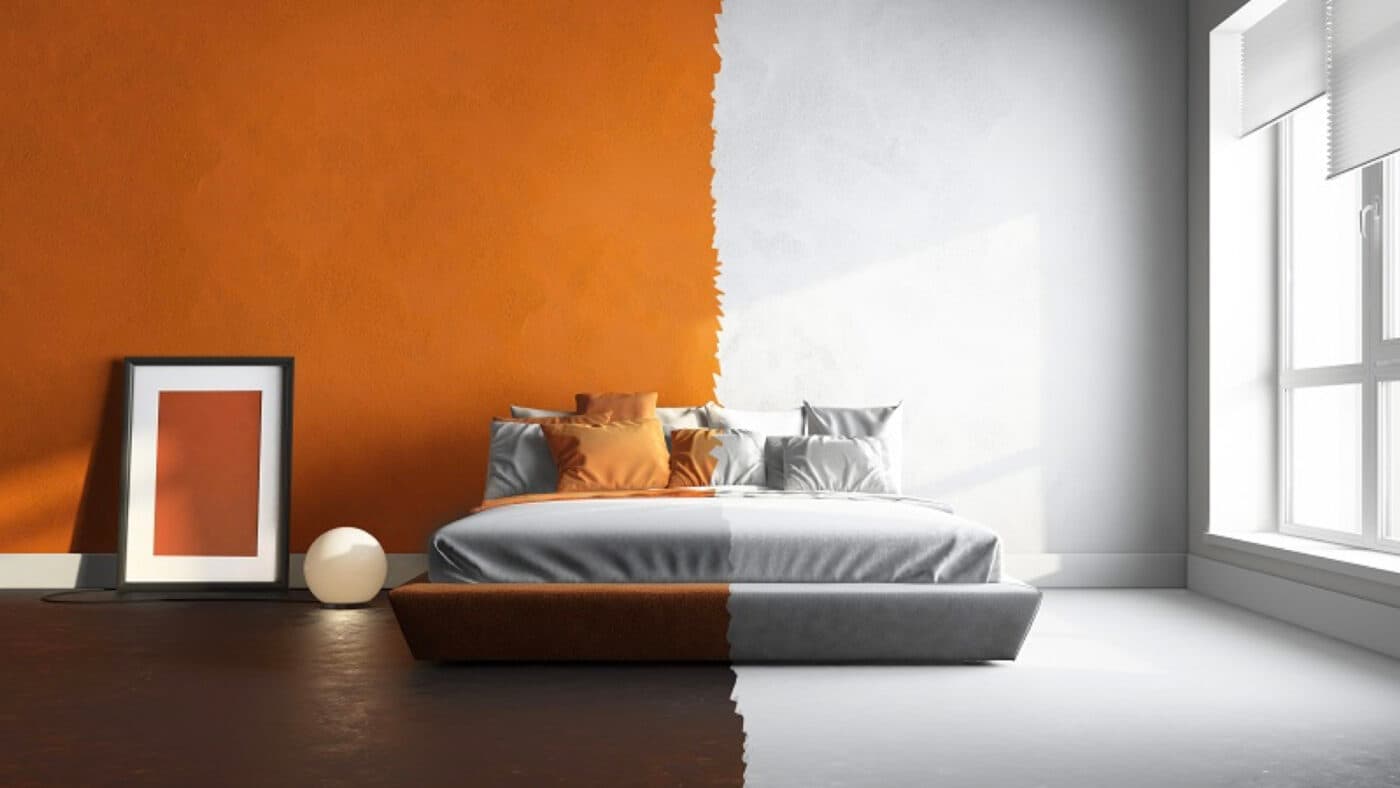
BRRRR
How do I add value to my property through a kitchen renovation?
A grotty-looking kitchen isn’t going to pop out to a potential tenant scrolling through Trade Me.
BRRRR
6 min read

Author: Ilse Wolfe
Former Renovations Coach at Opes Accelerate. Property Investor for 15 years.
Reviewed by: Laine Moger
Journalist and Property Educator, holds a Bachelor of Communication (Honours) from Massey University.
A fresh paint job may sound like a renovation no-brainer. And it is.
In fact, to most people painting might seem the easiest DIY part of your renovation.
But it’s not usually as straight forward as assumed.
Nonetheless, in terms of bang for buck, painting is the easiest way to add substantial value and rental potential to your investment.
This is why it’s step #5 on the Cashflow Hacking List – a 6-step approach to turbo-charge any BRRRR project.
In this article, you’ll learn everything you need to know about repainting your rental property – and whether you should use a professional, or go DIY.
As you’ll find, there’s much more to it than simply picking up a paint brush.
The first thing you need to decide is whether you will hire a professional painter or do it yourself.
If you hire a professional to paint your rental, there are two major differences – cost and time.
For instance, if you re-paint your rental yourself, you can often get everything you need to paint your whole interior for $1,000.
But, if you hire a professional painter, it can cost between $10K and $20K, which will often take around 3 weeks.
Most people are shocked by how much time a paint job takes. Painting will often take up 50% of your renovation timeline; it’s a time-consuming part of the process.
So, if your entire renovation is 6 weeks long – set aside 3 weeks for painting, although you can still have other tradies working on the property while the painters are in. This is because the actual painting of walls is a very small part of the total job.
Existing houses come with baggage – things like old wallpaper, and peeling glue. This wallpaper may need to be stripped back prior to painting. You may also need to skim bumps off the walls and re-Gib part of the walls.
This sort of work is extremely labour intensive, and can add a week to the original quote if hiring a professional. And if you are DIYing, you have to be prepared to do that work yourself. You can’t always just paint over old wallpaper.

Because there is so much preparation involved in painting, it’s a good idea to look at the walls of any potential house. This is before you commit to even buying it.
Walls come in different levels of difficulty.For instance, the most expensive scenario is where walls have old wallpaper on them that is bumping and lifting. This will likely cost in the region of $20K to repaint (for a professional quote).
Just below this is smooth wallpaper that isn’t peeling. In this instance, a professional painter will be able to paint directly over it and this should cost about $10K-$15K.
The least expensive scenario is if your property has no wallpaper at all. Instead, the walls are already painted, so a light top coat will do. This will be the cheapest job to get done professionally at around $10K.
But if you are really cost conscious, you may be able to get this down further.
For instance, if your house has good quality walls and has been painted with a decent colour palette, it might be the case that one single top coat will make it look like you’ve done a full paint job.
As I’ve mentioned earlier, painting is 50% of the entire renovation job. It’s a big time-consuming element and will take weeks to complete.
This is why a spray paint (which can be done in 1 to 2 days) can be an attractive alternative for some investors. But this type of paint, used commonly with New Builds and professional builders, can be a risk.
Why? Because a spray-painted wall is much more difficult to repaint, particularly if you are just repainting a patch. The difference is very noticeable.
This is why a rolled finish is preferable; it has the longevity and can blend a patch of repaint much more easily. For example, if one of your tenant’s kids takes a crayon to the wall.
Not only that, spray painting is a skill in itself. It’s not the up-down roller … you’re having to wield an airborne applicator. So, it usually requires a professional. This comes at a cost.
However, investors have been known to hack a professional finish by working in pairs. For instance, one person sprays the paint, and the second person immediately rolls over it with a roller brush. It can be a way to get the best of both worlds: Speed and finish.

Colour-wise, ‘black white’ paint is the whitest of white and is very popular.
This is inoffensive and appeals to a mass market. However, it’s also the most obvious when it comes to wear and tear. So, you may have to do top coat refreshes more often.
A similar balance must be considered when deciding between matte and gloss paint. In terms of finish, matte is more popular. This is because it’s on trend, it doesn’t reflect light, it looks more premium and it will hide any painting mishaps … like uneven rolls or bumps.
But the con is, matte absorbs everything. So, that black scuff from moving the couch, the crayons from the precious toddler drawing on the walls – it’s all harder to get off. Whereas, low sheen or satin (or gloss) has a more repellent quality so you can wipe away a lot more of these imperfections.
In terms of price, the two are on par. The decision will come down to what is best for your rental. This means that while a matte paint may look better, and hide your DIY amateurism – it may require more frequent top-ups to keep it looking fresh. This could be more expensive in the long run.
A gloss finish would be easier to wipe away inconvenient and inevitable marks, but it’s less forgiving when it comes to showing imperfections.

While you’re inspecting your walls, pay close attention to the other surfaces that require painting when doing your initial property inspections.
This is because professional quotes are for ceilings and walls only. And in a rundown, 60-year-old house, there is a lot of work to be done in the windows.
Windows are no exception when it comes to prep work, and will incur an added cost to you regardless of whether you have a professional or not. Things like: Filling gaps, retouching, priming and repainting can be so fiddly that it’s an extra $5K to any base quote.
Similarly, different surfaces require different paints. For instance, window and door trims need a hardier paint than you need for a ceiling.
So, even if you’re DIYing it, help yourself out by keeping the same colour across paint types, even though you do need hard-wearing paints for different surfaces. This way imperfections are less obvious.
All things considered, an interior paint job is the sure-fire way to increase your property’s value and rentability.
And if you do-it-yourself correctly, it can be a cheap way to increase the potential market rent. But remember, if you are going it alone you’ll need to prepare for more than just a wet paint brush.
This article is for your general information. It’s not financial advice. See here for details about our Financial Advice Provider Disclosure. So Opes isn’t telling you what to do with your own money.
We’ve made every effort to make sure the information is accurate. But we occasionally get the odd fact wrong. Make sure you do your own research or talk to a financial adviser before making any investment decisions.
You might like to use us or another financial adviser